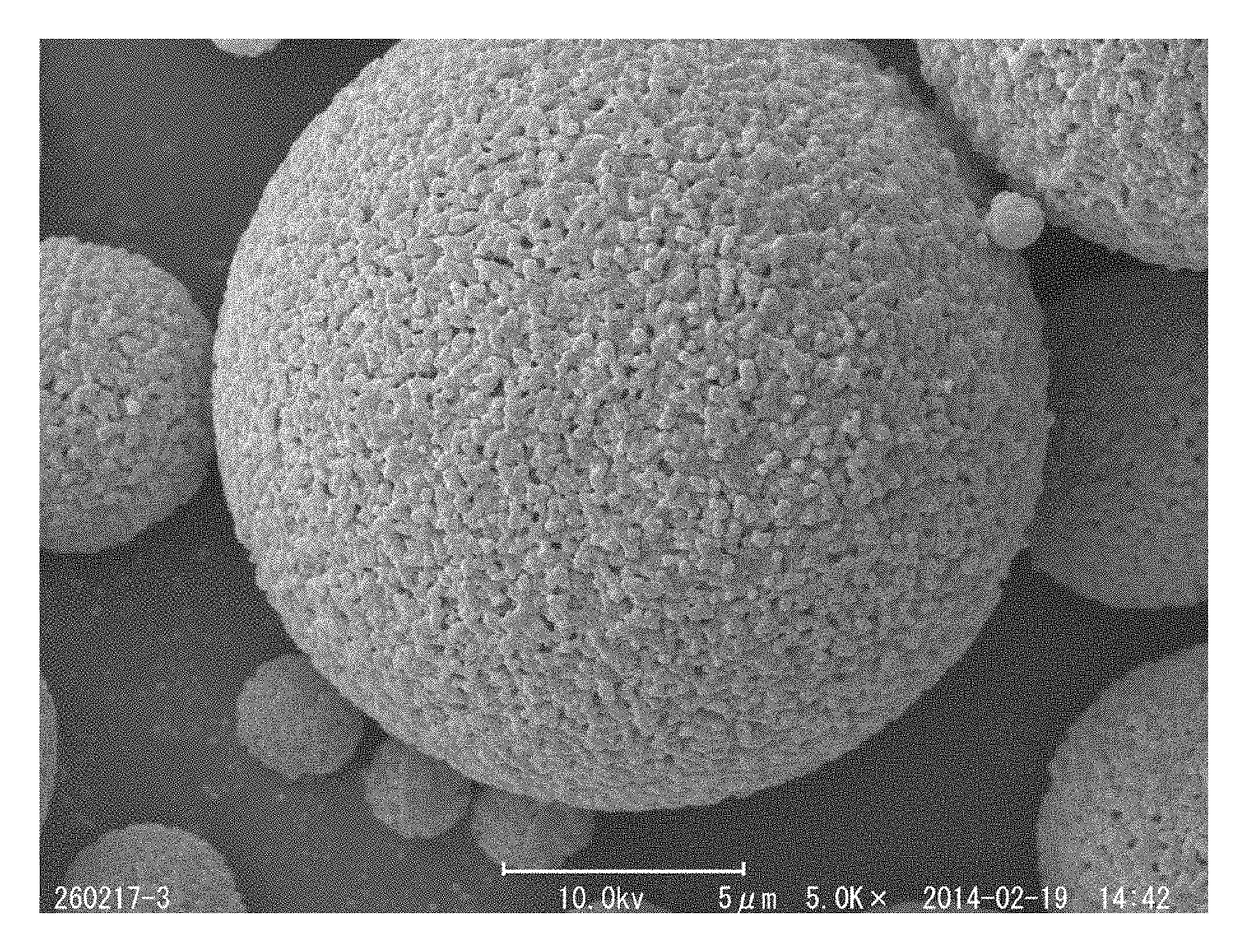Resin beads, method for manufacting resin beads and product including resin beads
a technology of resin beads and resin beads, which is applied in the field of resin beads, can solve the problems of difficult to solve compatibility and adhesion simultaneously, make-up deterioration, etc., and achieve the effects of improving oil absorption, increasing specific surface area, and excellent oil absorption
- Summary
- Abstract
- Description
- Claims
- Application Information
AI Technical Summary
Benefits of technology
Problems solved by technology
Method used
Image
Examples
example 1 (example of
Production with Polymerizable Monomer Liquid Containing Non-Polymerizable Silicone-Acrylic Copolymer)
[0040]First of all, to a solution prepared in advance and obtained by dissolving 4 parts of V-65 in 200 parts of a polyethylene glycol dimethacrylate (trade name: NK 1G, manufactured by Shin-Nakamura Chemical Co., Ltd.), 200 parts of lauryl methacrylate (trade name: LMA, manufactured by Kao Corporation) and 28 parts of a non-polymerizable silicone-acrylic copolymer (trade name: KP-578, active ingredient of 100%, manufactured by Shin-Etsu Chemical Co., Ltd.) were added, and the resultant mixture was uniformly stirred and mixed to prepare a polymerizable monomer liquid. KP-578 used above is a graft copolymer containing an acrylic polymer and a dimethylpolysiloxane. The viscosity is 150 to 200 mPa·s at 25° C.
[0041]Subsequently, in another container, the polymerizable monomer liquid prepared above was added and mixed to an aqueous phase obtained by dissolving 80 parts of PVA as a dispers...
example 2 (example of
Production with Polymerizable Monomer Liquid Containing Non-Polymerizable Polyether-Alkyl Co-Modified Silicone)
[0043]First of all, 200 parts of butyl methacrylate (manufactured by Mitsubishi Rayon Co., Ltd.), 80 parts of a non-polymerizable polyether-alkyl co-modified silicone (trade name: KSG-310, active ingredients of 25 to 35%, manufactured by Shin-Etsu Chemical Co., Ltd.), and a solution prepared in advance and obtained by dissolving 4 parts of V-65 in 20 parts of propylene glycol monomethyl ether acetate were added to 200 parts of hexanediol dimethacrylate (trade name: NK Ester HD-N, manufactured by Shin-Nakamura Chemical Co., Ltd.). The resultant mixture was then uniformly stirred and mixed to prepare a polymerizable monomer liquid. Subsequently, in another container, resin beads containing a non-polymerizable silicone compound inside were obtained by the same operations, such as washing after polymerization, as in Example 1 except that polymerization was conducted using an aq...
example 3 (example of
Production with Polymerizable Monomer Liquid Containing Non-Polymerizable Silicone Elastomer)
[0044]Resin Beads Containing a Non-Polymerizable Silicone Compound inside in a fixed state were obtained by the same operations as in Example 1 except that 320 parts of lauryl methacrylate (trade name: LMA, manufactured by Kao Corporation) and 100 parts of a non-polymerizable silicone elastomer (trade name: 9040 S. E. B., active ingredients of 15%, manufactured by Dow Corning Toray Co., Ltd.) were added to a solution prepared in advance and obtained by dissolving 4 parts of V-65 in 80 parts of hexanediol dimethacrylate (trade name: NK Ester HD-N, manufactured by Shin-Nakamura Chemical Co., Ltd.), and the resultant mixture was uniformly stirred and mixed to prepare a polymerizable monomer liquid. The obtained resin beads were used as the resin beads of the present Example. The silicone elastomer (trade name: 9040 S.E.B.) used above is a mixture of 12% of a dimethicone crosspolymer and 88% of ...
PUM
| Property | Measurement | Unit |
|---|---|---|
| volume average particle diameter | aaaaa | aaaaa |
| volume average particle diameter | aaaaa | aaaaa |
| temperature | aaaaa | aaaaa |
Abstract
Description
Claims
Application Information
 Login to View More
Login to View More - R&D
- Intellectual Property
- Life Sciences
- Materials
- Tech Scout
- Unparalleled Data Quality
- Higher Quality Content
- 60% Fewer Hallucinations
Browse by: Latest US Patents, China's latest patents, Technical Efficacy Thesaurus, Application Domain, Technology Topic, Popular Technical Reports.
© 2025 PatSnap. All rights reserved.Legal|Privacy policy|Modern Slavery Act Transparency Statement|Sitemap|About US| Contact US: help@patsnap.com

